#Martha Jefferson randolph
Text
MARTHA JEFFERSON RANDOLPH // FIRST LADY OF THE UNITED STATES
“She was the eldest daughter of Thomas Jefferson, the third president of the United States and Acting First Lady of the United States. Randolph's mother died when she was nearly 10 years old, when only two out of her five siblings were alive. Her father saw that she had a good education. She spoke four languages and was greatly influenced by the education she received in a Paris convent school with daughters of the French elite. Randolph oversaw the operation of Varina and Edge Hill with her husband, and Monticello with her father. She was in regular correspondence with her father when they were not together. She provided emotional stability for Jefferson, which helped him weather his tumultuous political career.”


1 note
·
View note
Text




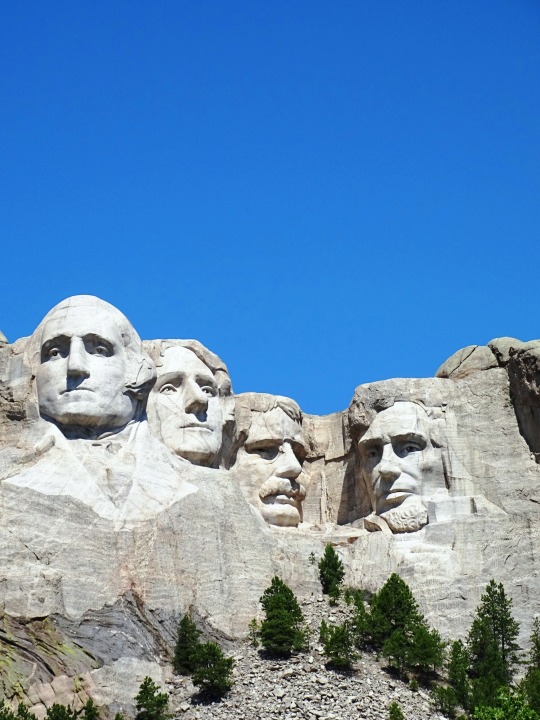







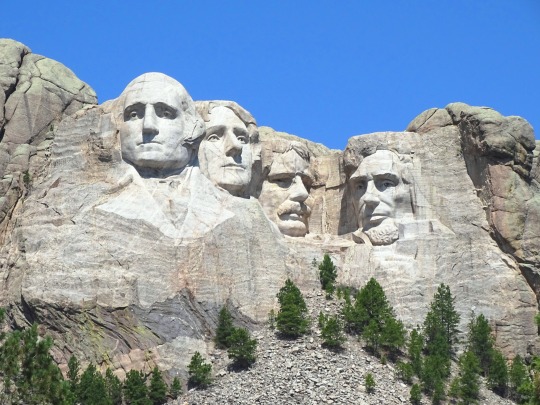
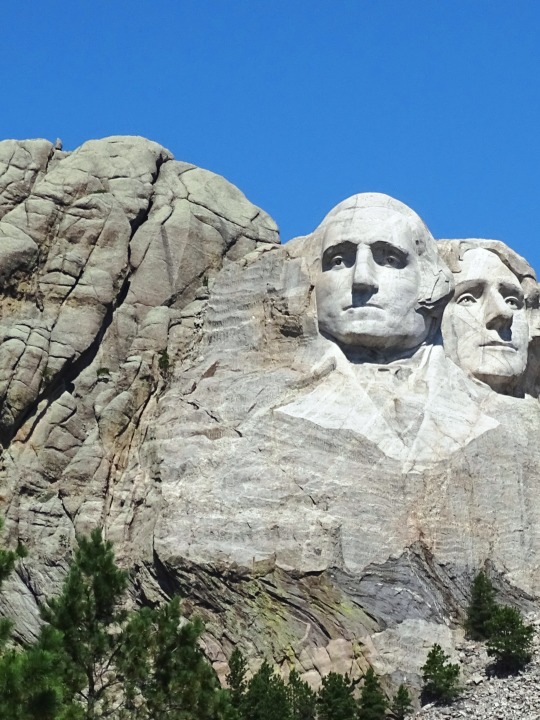
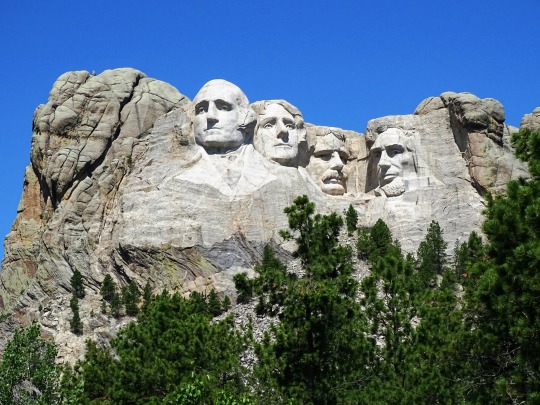
Thomas Jefferson Day
Thomas Jefferson, a founding father of the United States, was born on April 13, 1743. He held many roles and did much during the formative years of the country, including being the main author of the Declaration of Independence and the country’s third president. He wrote his own epitaph, highlighting what he most wanted to be remembered for: “HERE WAS BURIED THOMAS JEFFERSON AUTHOR OF THE DECLARATION OF AMERICAN INDEPENDENCE OF THE STATUTE OF VIRGINIA FOR RELIGIOUS FREEDOM AND FATHER OF THE UNIVERSITY OF VIRGINIA.”
Thomas Jefferson Day is a legal observance, but it is not a public holiday. A joint resolution approved on August 16, 1937, authorized the President of the United States to proclaim April 13 as “Thomas Jefferson’s Birthday” each year. The following year, President Franklin D. Roosevelt issued Presidential Proclamation 2276 to designate the day. Subsequent presidents have made similar proclamations. In Alabama, Thomas Jefferson’s birthday is officially celebrated on Presidents’ Day, along with George Washington’s.
Thomas Jefferson was born at the Shadwell plantation in Albemarle County, Virginia. His mother, Jane Randolph Jefferson, was from a prominent Virginia family, and his father, Peter Jefferson, was a planter and surveyor. After graduating from the College of William and Mary in 1762, he began studying law. As there weren’t official law schools at the time, Jefferson studied under a Virginia attorney. He began his work as a lawyer in 1767.
He married Martha Wayles Skelton on January 1, 1772. They had six children, but only two daughters lived to adulthood. Martha died in 1782 at the age of 33, and Jefferson never remarried. Besides keeping himself busy with politics throughout his life, he had many other interests, including gardening, architecture, music, and reading.
Jefferson was a member of colonial Virginia’s House of Burgesses between 1769 and 1775. He wrote “A Summary View of the Rights of British America” in 1774, which brought him to a wider audience. It said that the British Parliament didn’t have the right to use authority over the colonies. He was then selected to be a delegate to the Second Continental Congress. During this time, a panel of five was chosen to draft the Declaration of Independence. Of the five, which also included John Adams and Benjamin Franklin, Jefferson was chosen to write the draft. It was adopted on July 4, 1776.
In the fall of 1776, Jefferson resigned from the Continental Congress and was elected to the Virginia House of Delegates, which was formerly the House of Burgesses. In the late 1770s, he drafted the Virginia Statute for Religious Freedom. It was a notable forerunner to the First Amendment, and Jefferson thought it was one of his most substantial contributions, being important enough to include in his epitaph. After his time in the Virginia House of Delegates, he was Governor of Virginia from 1779 to 1781.
Following the Revolutionary War, Jefferson was part of Congress, which was known as the Congress of the Confederation at the time. He served from 1783 to 1784, and then became Minister to France in 1785, taking over the position that Benjamin Franklin had held. Because he was overseas, he was not able to attend the Constitutional Convention in 1787.
In the fall of 1789, Thomas Jefferson returned to America and became the first secretary of state. He helped found the Democratic-Republican Party, which opposed Alexander Hamilton’s Federalist Party, a party which wanted a strong central government with strong powers over the economy. Jefferson believed in a federal government with a limited role and believed in strong state and local governments.
He ran for president in 1796 and received the largest amount of votes after John Adams, so he became vice president. He ran against Adams again in 1800, and this time beat him. But his electoral vote count tied that of his running mate, Aaron Burr, and it was up to the House of Representatives to declare Jefferson as president. Because of this, the Twelfth Amendment, which stipulated separate voting for president and vice president, was ratified in 1804.
Jefferson served two terms as president and was in office from 1801 to 1809. During his first term, in 1803, he helped orchestrate the Louisiana Purchase, in which the size of the United States doubled with the purchase of land for $15 million from France. Jefferson sent Meriwether Lewis and William Clark on an expedition, known as the Corps of Discovery, to explore the new land. With this trip, information was gathered about geography, plant and animal life, and American Indian tribes. During his second term, which he secured with over 70% of the popular vote, Jefferson worked to keep the country out of the Napoleonic Wars. He implemented the Embargo of 1807 after merchant ships were getting harassed by France and Britain. It was an unpopular move, though, as it shut down American trade and hurt the economy; it was repealed in 1809. Jefferson did not run for a third term in 1808.
After his presidency, Jefferson retired to his home, Monticello. “Monticello” means “little mountain” in Italian. Indeed the home is located on a small mountain, on the edge of the Shadwell property where Jefferson was born. He had begun clearing the area for a home in 1768. He designed the home and gardens himself, and he continually worked on the house throughout his life. Art and gadgets filled the rooms, and he kept records of everything that went on at the plantation.
During his retirement years, he also helped found the University of Virginia. He helped design both its buildings and its curriculum. He also made sure it wasn’t a religious school and that there wasn’t a religious litmus test in order to attend it.
In 1815, he sold his 6,700 volume personal library to Congress, to replace the books that had been destroyed by the British in the War of 1812, when they burned the Capitol, which housed the Library of Congress at the time. Jefferson’s books became the foundation of what became the Library of Congress’s new library.
Although Jefferson is revered as one of the founding fathers, he is not a man without contradictions and shortcomings. He was a promoter of liberty and wrote “all men are created equal,” but was a slave owner throughout his whole life, during which he owned a total of about 600 slaves. He believed blacks were inferior humans and didn’t think coexistence would be possible if they were free. And although he never remarried after the loss of his beloved wife, Martha, he went on to father more children with one of his slaves, Sally Hemings. Some of the slaves that were in his bloodline were freed after his death, but most of his slaves were sold.
Thomas Jefferson passed away at Monticello at the age of 83, on July 4, 1826, on the 50th anniversary of the adoption of the Declaration of Independence. As if the date of his death wasn’t ironic enough, fellow founding father John Adams died on the same day. Thomas Jefferson died first, but Adams did not know that Jefferson had died, and his last words were “Thomas Jefferson survives.” Jefferson was buried at Monticello. Monticello was sold off following his death to pay debts, but a nonprofit organization acquired it in the twentieth century and it was opened to the public in 1954.
Source
#Thomas Jefferson Day#13 April 1743#anniversary#US history#born#birthday#Mount Rushmore National Memorial#controversial memorial#USA#controversy#Black Hills#South Dakota#Gutzon Borglum#summer 2019#original photography#tourist attraction#landmark#landscape#nature#NationalThomasJeffersonDay#Thomas Jefferson#US President#Teddy Roosevelt#Theodore Roosevelt#Abraham Lincoln#George Washington#North Central Region#Great Plains#travel#vacation
12 notes
·
View notes
Note

which daughter

also i thikn googles drunk
angie ham never had kids
i think google is confusing angelica church and angelica hamilton, which happens a lot
i believe it was martha jefferson randolph who went to school with angelica’s daughter, but i could be wrong since i don’t know much about either families, but my sources vaguely mention that the two went to some fancy french school and one says they went together (i should have at least one source on that google doc)
10 notes
·
View notes
Note
hii<3 have you read Hamliza books like Alex & Eliza A Love Story, I Elizabeth Hamilton and My Dear Hamilton? if so did you like them?? and is there any other Hamliza book to read?
I've read all of them! The "Alex & Eliza" series by Melissa De La Cruz was generally sweet, but the most fictionalized of the ones you listed. I like "My Dear Hamilton," though I found the sub-plot with Eliza and James Monroe a little odd. (I actually liked America's First Daughter, a novel about Martha Jefferson Randolph by the same authors a little better than their Hamilton novel.) "I, Elizabeth Hamilton" by Susan Holloway Scott was probably my favorite of the three you listed. I thought that one was well written and closer to the real story of their relationship.
If you haven't read it yet, Elizabeth Cobbs also wrote a fantastic fiction book about Hamilton called "The Hamilton Affair". It's a dual POV that starts in Alexander and Eliza's younger years, and follows them through Hamilton's death. There's a part where Eliza and Hamilton go ice skating during the revolution that was hilarious. Highly recommend!
11 notes
·
View notes
Text



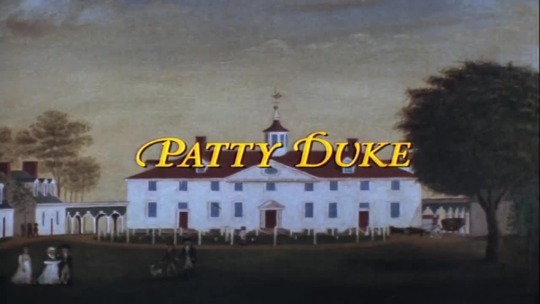



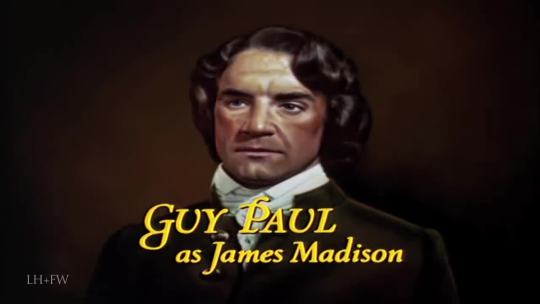
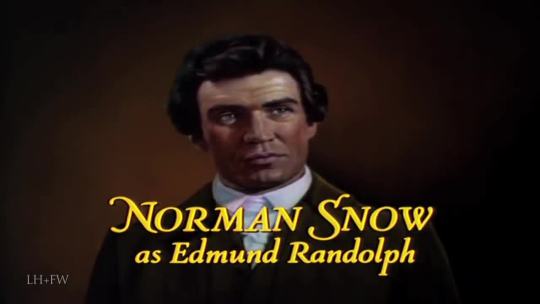
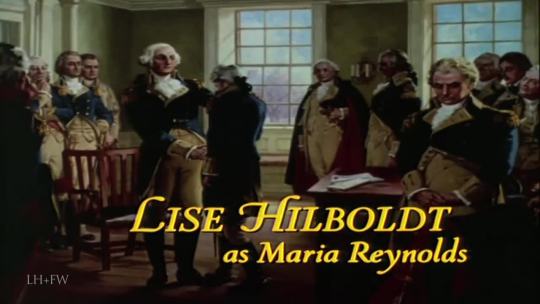
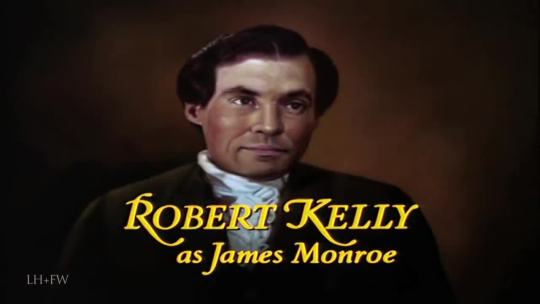




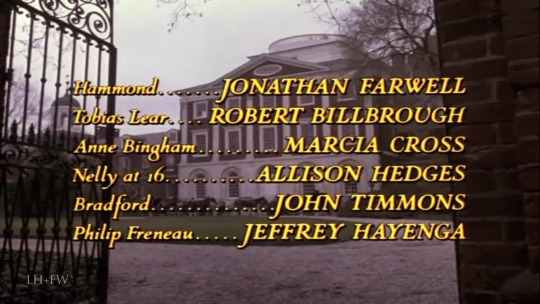
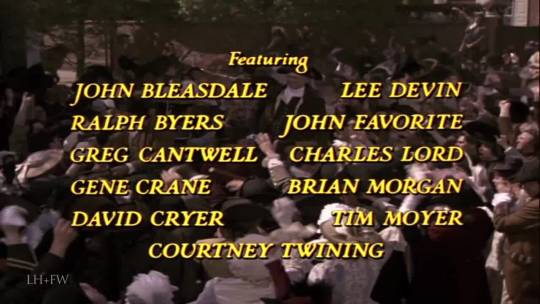



George Washington II: The Forging of a Nation - CBS - September 21-22, 1986
Historical Drama (2 episodes)
Running Time: 190 minutes
Stars:
Barry Bostwick as George Washington – Commander-in-Chief of the Continental Army, and later first President of the United States
Patty Duke Astin as Martha Washington – Wife of George Washington
Jeffrey Jones as Thomas Jefferson
Richard Bekins as Alexander Hamilton
Penny Fuller as Eliza Powel
Eve Gordon as Elizabeth Schuyler Hamilton
Marcia Cross as Anne Bingham
Guy Paul as James Madison
Norman Snow as Edmund Randolph
Robert Kelly as James Monroe
Lise Hilboldt as Maria Reynolds
Haviland Morris as Henrietta Liston
Daniel Davis as Patrick Henry
Richard Fancy as William Duer
Farnham Scott as Henry Knox
Nicholas Kepros as John Jay
#George Washington II: The Forging of a Nation#TV#1986#Historical Drama#CBS#Barry Bostwick#Patty Duke#Jeffrey Jones#Daniel Davis#Richard Bekins#Penny Fuller#Guy Paul#Robert Kelly
9 notes
·
View notes
Text
People from 1700s Virginia I would fist fight (and would win):
1. Patrick Henry
2. Colonel Randolph
3. Gabriella Harvie
#Clair has personal beef with whores from colonial Virginia#i have most defin ranted about Patrick Henry here several times#if you’d like a rant about the colonel and his less-than-a-quarter-of-his-age-old wife#i will.#anyways reading americas first daughter and the tea is so strong#10/10 would recommend#clair rambles#americas first daughter#Martha Jefferson Randolph#Randolph#Thomas Mann Randolph#Patrick Henry#that little young skank Gabrielle or whatever#amrev#american revolution#Virginia#Virginia history#American history#18th century#18th century history#history
5 notes
·
View notes
Text
Thomas Jefferson Struggles As A Father! Letters To Eleven Year Old Patsy Jefferson
Thomas Jefferson Struggles As A Father! Letters To Eleven Year Old Patsy Jefferson
Thomas Jefferson was one of the authors of the declaration of independence, a founding father, and later a president of the United States of America; however, before all of that he was a husband and a father. In today’s post we are going to be sharing some letters he wrote to his eleven year old daughter Martha (Patsy) after the death of his wife.
(more…)

View On WordPress
#AMERICAN HISTORY#biographies#history#martha jefferson#Martha Jefferson Randolph#thomas jefferson#Thomas Jefferson family#thomas jefferson letters#Thomas Jefferson wife#U.S History#U.S Presidents#us history#world history
8 notes
·
View notes
Photo

New Episode! On this week's Hum. Servt I share a grim letter about Thomas Jefferson's daughter Martha Jefferson Randolph and slavery.
https://humservt.com/episode-16-disciplinarians/
I try to use it to explain what lessons we as a society (and white women especially) need to learn from such evidence.
#humservt#Your Most Obedient & Humble Servant#Martha Jefferson Randolph#slavery#black history#black history month#women's history#women's history podcast
2 notes
·
View notes
Text
Monsters At Monticello P1/2
In all depictions of Monticello, one imagines the picturesque scene of the landscape and the grand Roman inspired architecture. However, what happened within the walls was far less pretty. What one doesn’t imagine of Monticello is abuse that occurred among the years to a few women residing in the home. Besides only the systematic rape of his slave, Sally Hemings, by Jefferson himself, there were two other women who endured abuse at the hands of their husbands in the home. All of which, Jefferson, Master of Monticello, did not a thing about. If Thomas Jefferson, author of the declaration of independence and third president of the United States, was the supposed “Master of Monticello”, why did he not interrupt the abuse of his eldest daughter and his eldest grand-daughter? He stayed passive in the face of all they were experiencing and if he did nothing to stop it, how can he be coined the Master of Monticello?
Throughout the decades, and even into modern day, Thomas Jefferson has still managed to continue the illusion of a paradise Monticello, home at various periods to his two surviving daughters and his many grand-children and great-grandchildren. The home itself was constructed in the late 1760s, officially becoming finished by 1772. Following the death of his wife, Jefferson resolved, after five lengthy years living abroad as a diplomat in France, to have nearly the entirety rebuilt. This was not only a decision made due to the inspiration he received in Europe from neoclassical architecture, but also from the haunting memories of his wife in that home. The erection, after completion, is a three story, brick frame building with thirty-five rooms, two main entrances, an east portico and a west portico and a private entry of which leads to the various gardens [x].
Not counting the illegitimate children Sally Hemings gave birth to, Jefferson had six children of his own blood with his first and only wife. During their marriage, they lost four of their children at young ages due to weakness and illness, while his youngest daughter died two years succeeding her death. Both of his surviving daughters, Mary “Polly” Jefferson and Martha “Patsy” Jefferson, lived at Monticello during their youth and at random points during their adulthood. Polly, unfortunately, died in 1804 from complications after her several births. Martha, Jefferson’s eldest and only daughter who lived past his death, resided for a lot of her years at Monticello with her family consisting of her twelve children and her husband Thomas Mann Randolph Jr. She was one of three women to endure abuse in the home of her father.
Married in 1790, Martha and her husband seemingly lived an almost heavenly existence what with their many descendants and her father’s support of her. However, Randolph proved to be increasingly volatile over the years with his growing alcoholism and the sense of despair that came with the alleged abuse he sustained as a child from his father who effectively remarried after the death of his mother, producing a son of the same name and, “erasing his first son [Tom] from his prior marriage” [x]. Due to the alienation from his paternal figure, the feeling of his father-in-law controlling his married life, and the family’s tenuous financial situation, the drinking only swelled over the years. After a humiliating loss of his property, Randolph proved at many points to be incredibly irrational, irresponsible and lashed out at his family especially at his wife and his only son. According to eyewitnesses at the time, the abuse Martha sustained was “violent.” Martha had to distance herself from him for her safety and her adult-children did the same. Angry, Randolph left Martha for several years and she moved to Boston with her children in order to fully separate the distance. They were reunited only before his death two years later.
To say that Thomas Jefferson knew of the abuse of his daughter is an understatement, Martha’s father not only witnessed and heard the commotion; but even after Martha had him leave for greater safety of herself and her children, Jefferson himself continued to maintain and healthy relationship with his son-in-law even a month before his death when his daughter was still separated from his husband. “I have for some time entertained the hope that your affairs being once wound up,” Jefferson authored to Randolph, “Your mind would cease to look back on them, and resume the calm so necessary to your own happiness . . . and especially that you would return again to their society. I hope there remains no reason now to delay this longer, and that you will rejoin our table and fireside as heretofore . . . be assured that to no one will your society be more welcome thanto myself, and that my affectionate [friendship] to you and respect are constant and sincere.” Jefferson was optimistic that his daughter and his son-in-law would be able to repair the damaged relationship between them.
What one would’ve hoped concerning an abusive husband is her father would’ve wished for the full separation of Martha from her husband. However, this was obviously not the case. Jefferson’s belief was that, despite Randolph’s behavior he was an honest man with the weight of his family to carry him into the future. He wished not to jeopardize the relations of his son-in-law with his family as Jefferson was traditionally a family man. But if he was so much of a family man, wouldn’t in this instance he would’ve preferred to have his daughter maintain her safety within her own household? He not only left her to the abuse of her husband but continued to keep to opinion that it was alright and healthy. We can see that even if it was his daughter, Jefferson did not care. This, can be added as another blot onto ugly Jefferson’s character.
If then we look at this pattern of which Jefferson appears to view the abuse of his daughter from her husband, perhaps how he views violence towards women in general, we can guess not how he treated the same events when occurring to his eldest granddaughter, Ann. Even in the sanctity and safety of their home, the master of Monticello would do nothing to discontinue the abuse and fear coming from his son-in-law and grandson-in-law. Only this time, in the case of his eldest granddaughter, his attitude of bystanding the physical abuse is one of the actions that resulted in her death. Thomas Jefferson, the supposed master of Monticello, was a bystander in female abuse making him and not another person, the true monster of Monticello.
(To be continued)
#I wrote this on a whim#thomas jefferson#Martha Jefferson randolph#ann cary Randolph bankhead#pressles musing#american history#us history
103 notes
·
View notes
Photo

T H E F I R S T L A D I E S
#3 // Martha Jefferson Randolph
Martha “Patsy” Jefferson, born in 1772, was the eldest child of Thomas Jefferson and his wife Martha Wayles Skelton. Just before her tenth birthday, Patsy’s mother died. Her father spent the next several months overcome with grief and with Patsy, in her words, as “his constant companion.” In 1784, she accompanied Jefferson to Paris where he served as a Minister to France for the fledgling United States. While there, she attended an exclusive and intensive convent school where she studied several languages, music, arithmetic, and history among other subjects. Three years later, she was joined there by her only surviving sister, Maria (“Polly”).
Not long after returning from France, Patsy married Thomas Mann Randolph; she was just seventeen. She gave birth to her first child the following year and went on to have a total of twelve children between 1791 and 1818, eleven of whom lived past infancy. A devoted mother, highly educated and intelligent, Patsy personally took charge of educating her brood. Though busy raising her growing family by 1800, she supported her father’s presidential campaign that year. President Jefferson, as a widower, technically had no “first lady”.* However, Patsy did make two extended visits to Washington in 1802 and 1805. During these trips, she occupied a role similar to that of the previous presidents’ wives: she made social calls and acted as the White House hostess. The eloquent, gregarious first daughter was well-liked in Washington society. Her presence and that of several of her children improved Jefferson's public image and also gave him a respite from politics. Even when she was absent, Patsy provided comfort and counsel to her "dearest Father" through a regular correspondence.
Patsy’s large family moved to Monticello from the nearby Randolph estate after Jefferson retired in 1809. She did her best to manage household affairs there despite Jefferson’s growing financial difficulties. Patsy, now estranged from her husband, was still at Monticello in June 1826 when her father grew gravely ill. A few days before his death, Jefferson expressed his gratitude for the lifelong devotion of his “lov'd daughter” in a brief poem and lamented that the “last pang of life is in parting from you.” A grief-stricken Patsy and her adult children were left to handle his many debts, ultimately selling Monticello and most of its slaves to do so. In her remaining years, Patsy and two of her daughters opened a small school in Virginia at which she sometimes taught. She died suddenly in late 1836 at the age of 64, leaving behind a will that freed several slaves. Her brief obituary stated that “the character of this distinguished lady must be drawn by an abler hand than ours.”
*According to the White House’s official list of First Ladies, Jefferson’s wife Martha Wayles Skelton Jefferson (d. 1782) is recorded as the third First Lady. However, the late Mrs. Jefferson obviously did not have the ability to fill the role of the president’s wife in 1801.
#martha jefferson randolph#patsy jefferson#thomas jefferson#american history#historyedit#I'm sick of looking at this and thinking about it so here it is#I frankly had no idea that she was so highly intelligent and accomplished#it took a lot of effort to pare down her life into three paragraphs#I mean I guess with TJ being her dad and barely giving her time in her school schedule to sleep or eat#it makes sense that she'd be one of the best-educated women in the country#shame her sons grew up to be a bunch of Confederates though but what are you gonna do I guess; everyone in their time... :\#*firstlady
144 notes
·
View notes
Photo

From our stacks: Illustration “Mrs. Thomas M. Randolph, (Martha Jefferson.) From an original picture by T. Sully in possession of her daughter, Mrs. Nicholas P. Trist. Engd. by J. Rogers.” from Appletons’ Portrait Gallery of Women Celebrated in History, Poetry, and Romance, for Beauty, Character, and Heroism; Embracing Historical Subjects and Ideal Portraits of the Wonderful Creations of Shakespeare, Lord Byron, and Sir Walter Scott. In Two Volumes.- Vol. I. New York: D. Appleton and Company, 1875.
#mrs. thomas m. randolph#martha jefferson#daughter of thomas jefferson#thomas jefferson#jefferson#martha jefferson randolph#history#book#books#t. sully#sully#j. rogers#rogers#engraving#book engraving#illustration#book illustration#vintage illustration#american history#women in history#historical women#jeffersons#randolph#martha randolph#detroit public library
32 notes
·
View notes
Photo

Martha Jefferson Randolph, First Lady of the United States (27 September 1772 - 10 October 1836)
#martha jefferson#martha jefferson randolph#first lady of the united states#daughter of thomas jefferson#wife of thomas m randolph jr#history#women in history#18th century#19th century#art
29 notes
·
View notes
Photo
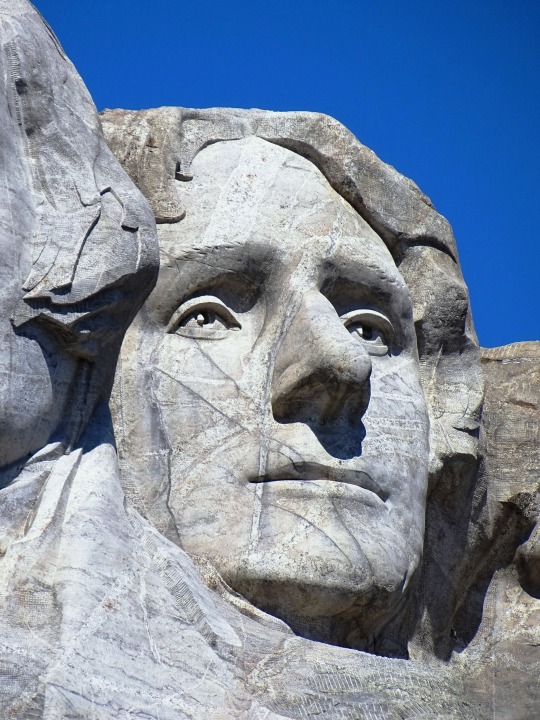
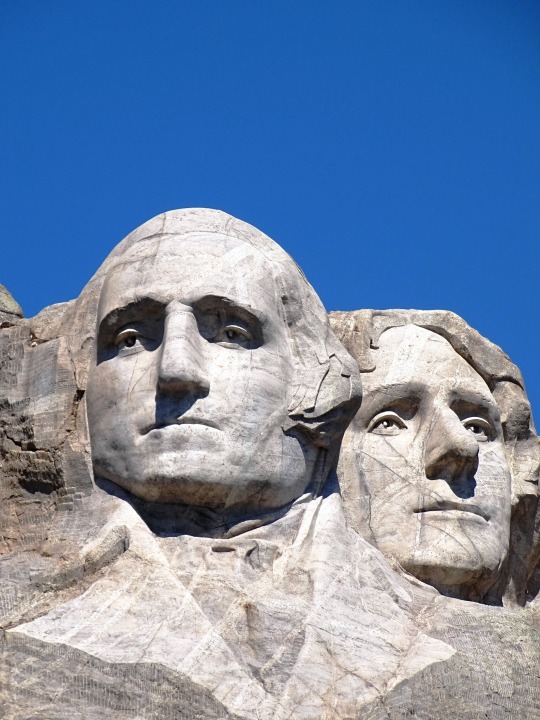
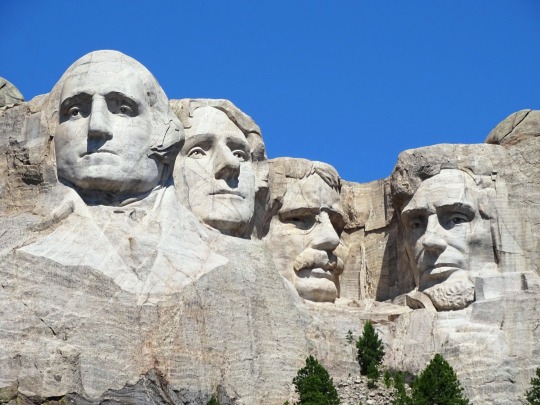

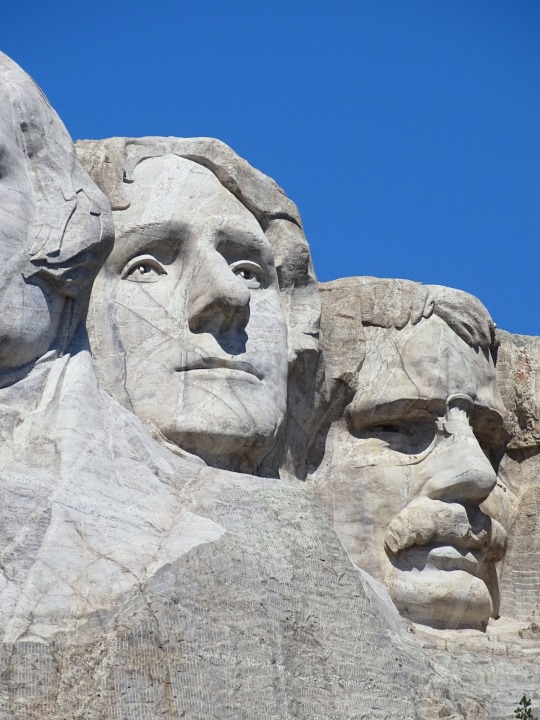

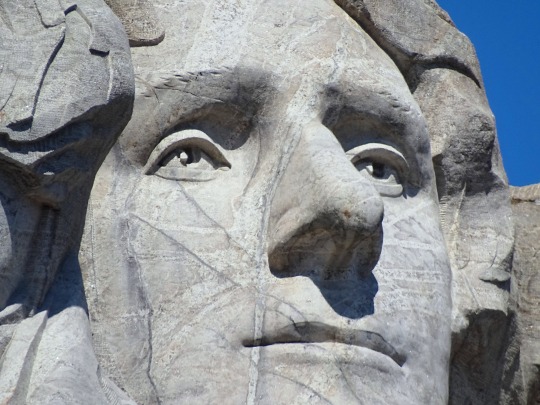
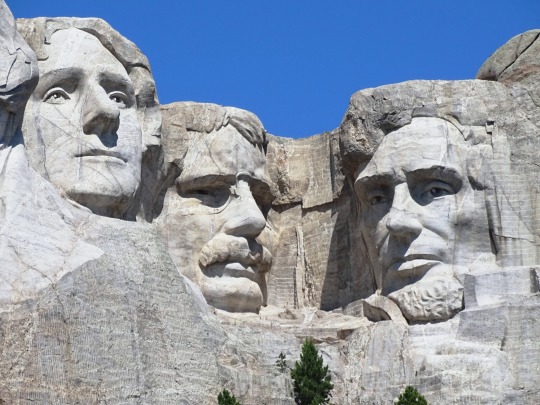
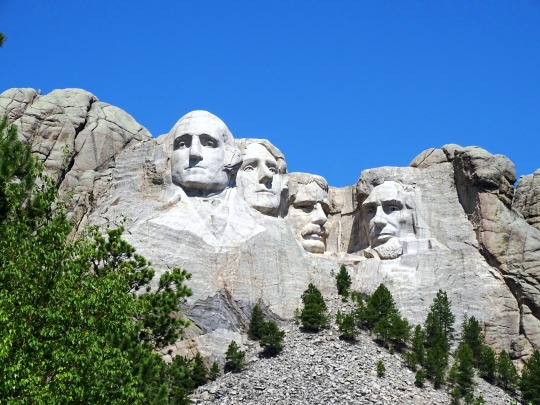

Thomas Jefferson Day
Thomas Jefferson, a founding father of the United States, was born on April 13, 1743. He held many roles and did much during the formative years of the country, including being the main author of the Declaration of Independence and the country’s third president. He wrote his own epitaph, highlighting what he most wanted to be remembered for: “HERE WAS BURIED THOMAS JEFFERSON AUTHOR OF THE DECLARATION OF AMERICAN INDEPENDENCE OF THE STATUTE OF VIRGINIA FOR RELIGIOUS FREEDOM AND FATHER OF THE UNIVERSITY OF VIRGINIA.”
Thomas Jefferson Day is a legal observance, but it is not a public holiday. A joint resolution approved on August 16, 1937, authorized the President of the United States to proclaim April 13 as “Thomas Jefferson’s Birthday” each year. The following year, President Franklin D. Roosevelt issued Presidential Proclamation 2276 to designate the day. Subsequent presidents have made similar proclamations. In Alabama, Thomas Jefferson’s birthday is officially celebrated on Presidents’ Day, along with George Washington’s.
Thomas Jefferson was born at the Shadwell plantation in Albemarle County, Virginia. His mother, Jane Randolph Jefferson, was from a prominent Virginia family, and his father, Peter Jefferson, was a planter and surveyor. After graduating from the College of William and Mary in 1762, he began studying law. As there weren’t official law schools at the time, Jefferson studied under a Virginia attorney. He began his work as a lawyer in 1767.
He married Martha Wayles Skelton on January 1, 1772. They had six children, but only two daughters lived to adulthood. Martha died in 1782 at the age of 33, and Jefferson never remarried. Besides keeping himself busy with politics throughout his life, he had many other interests, including gardening, architecture, music, and reading.
Jefferson was a member of colonial Virginia’s House of Burgesses between 1769 and 1775. He wrote “A Summary View of the Rights of British America” in 1774, which brought him to a wider audience. It said that the British Parliament didn’t have the right to use authority over the colonies. He was then selected to be a delegate to the Second Continental Congress. During this time, a panel of five was chosen to draft the Declaration of Independence. Of the five, which also included John Adams and Benjamin Franklin, Jefferson was chosen to write the draft. It was adopted on July 4, 1776.
In the fall of 1776, Jefferson resigned from the Continental Congress and was elected to the Virginia House of Delegates, which was formerly the House of Burgesses. In the late 1770s, he drafted the Virginia Statute for Religious Freedom. It was a notable forerunner to the First Amendment, and Jefferson thought it was one of his most substantial contributions, being important enough to include in his epitaph. After his time in the Virginia House of Delegates, he was Governor of Virginia from 1779 to 1781.
Following the Revolutionary War, Jefferson was part of Congress, which was known as the Congress of the Confederation at the time. He served from 1783 to 1784, and then became Minister to France in 1785, taking over the position that Benjamin Franklin had held. Because he was overseas, he was not able to attend the Constitutional Convention in 1787.
In the fall of 1789, Thomas Jefferson returned to America and became the first secretary of state. He helped found the Democratic-Republican Party, which opposed Alexander Hamilton’s Federalist Party, a party which wanted a strong central government with strong powers over the economy. Jefferson believed in a federal government with a limited role and believed in strong state and local governments.
He ran for president in 1796 and received the largest amount of votes after John Adams, so he became vice president. He ran against Adams again in 1800, and this time beat him. But his electoral vote count tied that of his running mate, Aaron Burr, and it was up to the House of Representatives to declare Jefferson as president. Because of this, the Twelfth Amendment, which stipulated separate voting for president and vice president, was ratified in 1804.
Jefferson served two terms as president and was in office from 1801 to 1809. During his first term, in 1803, he helped orchestrate the Louisiana Purchase, in which the size of the United States doubled with the purchase of land for $15 million from France. Jefferson sent Meriwether Lewis and William Clark on an expedition, known as the Corps of Discovery, to explore the new land. With this trip, information was gathered about geography, plant and animal life, and American Indian tribes. During his second term, which he secured with over 70% of the popular vote, Jefferson worked to keep the country out of the Napoleonic Wars. He implemented the Embargo of 1807 after merchant ships were getting harassed by France and Britain. It was an unpopular move, though, as it shut down American trade and hurt the economy; it was repealed in 1809. Jefferson did not run for a third term in 1808.
After his presidency, Jefferson retired to his home, Monticello. “Monticello” means “little mountain” in Italian. Indeed the home is located on a small mountain, on the edge of the Shadwell property where Jefferson was born. He had begun clearing the area for a home in 1768. He designed the home and gardens himself, and he continually worked on the house throughout his life. Art and gadgets filled the rooms, and he kept records of everything that went on at the plantation.
During his retirement years, he also helped found the University of Virginia. He helped design both its buildings and its curriculum. He also made sure it wasn’t a religious school and that there wasn’t a religious litmus test in order to attend it.
In 1815, he sold his 6,700 volume personal library to Congress, to replace the books that had been destroyed by the British in the War of 1812, when they burned the Capitol, which housed the Library of Congress at the time. Jefferson’s books became the foundation of what became the Library of Congress’s new library.
Although Jefferson is revered as one of the founding fathers, he is not a man without contradictions and shortcomings. He was a promoter of liberty and wrote “all men are created equal,” but was a slave owner throughout his whole life, during which he owned a total of about 600 slaves. He believed blacks were inferior humans and didn’t think coexistence would be possible if they were free. And although he never remarried after the loss of his beloved wife, Martha, he went on to father more children with one of his slaves, Sally Hemings. Some of the slaves that were in his bloodline were freed after his death, but most of his slaves were sold.
Thomas Jefferson passed away at Monticello at the age of 83, on July 4, 1826, on the 50th anniversary of the adoption of the Declaration of Independence. As if the date of his death wasn’t ironic enough, fellow founding father John Adams died on the same day. Thomas Jefferson died first, but Adams did not know that Jefferson had died, and his last words were “Thomas Jefferson survives.” Jefferson was buried at Monticello. Monticello was sold off following his death to pay debts, but a nonprofit organization acquired it in the twentieth century and it was opened to the public in 1954.
Source
#Thomas Jefferson Day#13 April 1743#280th anniversary#US history#born#birthday#Mount Rushmore National Memorial#controversial memorial#USA#controversy#Black Hills#South Dakota#Gutzon Borglum#summer 2019#original photography#tourist attraction#landmark#landscape#nature#NationalThomasJeffersonDay#Thomas Jefferson#US President#Teddy Roosevelt#Theodore Roosevelt#Abraham Lincoln#George Washington#North Central Region#Great Plains
0 notes
Quote
These were the words she wanted to leave for him. So he folded it and tucked it inside his coat against his heart, where he carried it for the rest of his life.
Stephanie Dray and Laura Kamoie, America’s First Daughter
#boys of books#thomas jefferson#books#quotes#lit#reading#boys in books#founding father#founding fathers#thj#jefferson#jeffy#patsy jefferson#martha jefferson#martha jefferson randolph#america's first daughter#stephanie dray#laura kamoie#historical fiction#william short#thomas randolph#sally hemings
132 notes
·
View notes
Quote
Aaa-ooo!
We have to win.
What’d I miss? What’d I miss? Headfirst into a political abyss!
Wha? Wha? What’d I miss? I’ve come home to this? Headfirst, into the abyss!
I have my first cabinet meeting today,
Chick-a-pow!
I guess I’d better think of something to say I’m already on my way, Let’s get to the bottom of this…
On my way. What’d I miss? Ahhh ah!
Lin-Manuel Miranda
In the time between being appointed Secretary of State and accepting/heading to New York to join the cabinet, Jefferson’s eldest daughter, Martha Jefferson married. She was named for her mother and married Thomas Mann Randolph on February 23rd, soon after her father accepted the position in the cabinet. The wedding was held at Monticello, though the couple moved to Edgehill (about two miles away) afterwards.
After the wedding, Jefferson would head north towards New York to meet with the cabinet and join the new government.
Sources: the following sources were used - the collected letters/writings of Alexander Hamilton, Lin-Manuel Miranda’s Hamilton the Revolution, Ron Chernow’s biography of Hamilton, The Intimate Life of Alexander Hamilton by Allan McLane Hamilton, Hamilton by Richard Syllia, and Charles Cerami’s book called Young Patriots. In addition, War of Two by John Sedgwick and Washington and Hamilton by Tony Williams were used throughout. Thomas Jefferson information: https://www.loc.gov/collections/thomas-jefferson-papers/articles-and-essays/the- thomas-jefferson-papers-timeline-1743-to-1827/1790-to-1799/.
Follow us at @an-american-experiment where we are historically analyzing the lyrics of Hamilton with a new post every day!
#hamilton#alexander hamilton#lin-manuel miranda#hamilton the musical#hamilton an american musical#history#what'd i miss?#thomas jefferson#martha jefferson#thomas mann randolph#monticello#edgehill
7 notes
·
View notes
Quote
Martha Randolph, not suprisingly, appears to have been in a state of shock and the same was probably true for many of those who lived at Monticello. This was not only the death of one man; everyone understood that this was the death of an entire community. Members of Jefferson’s family were devestated by his loss, and their own fears as they contemplated their financial ruin, but, whatever happened, they were still free and white, they had the basic attributes of privilege that would ensure that they could fall only so far. They had merely lost property; they were not the property that was going to be sold to pay off their father’s and grandfather’s debts
The Hemings of Monticello, by Annette Gordon-Reed
9 notes
·
View notes